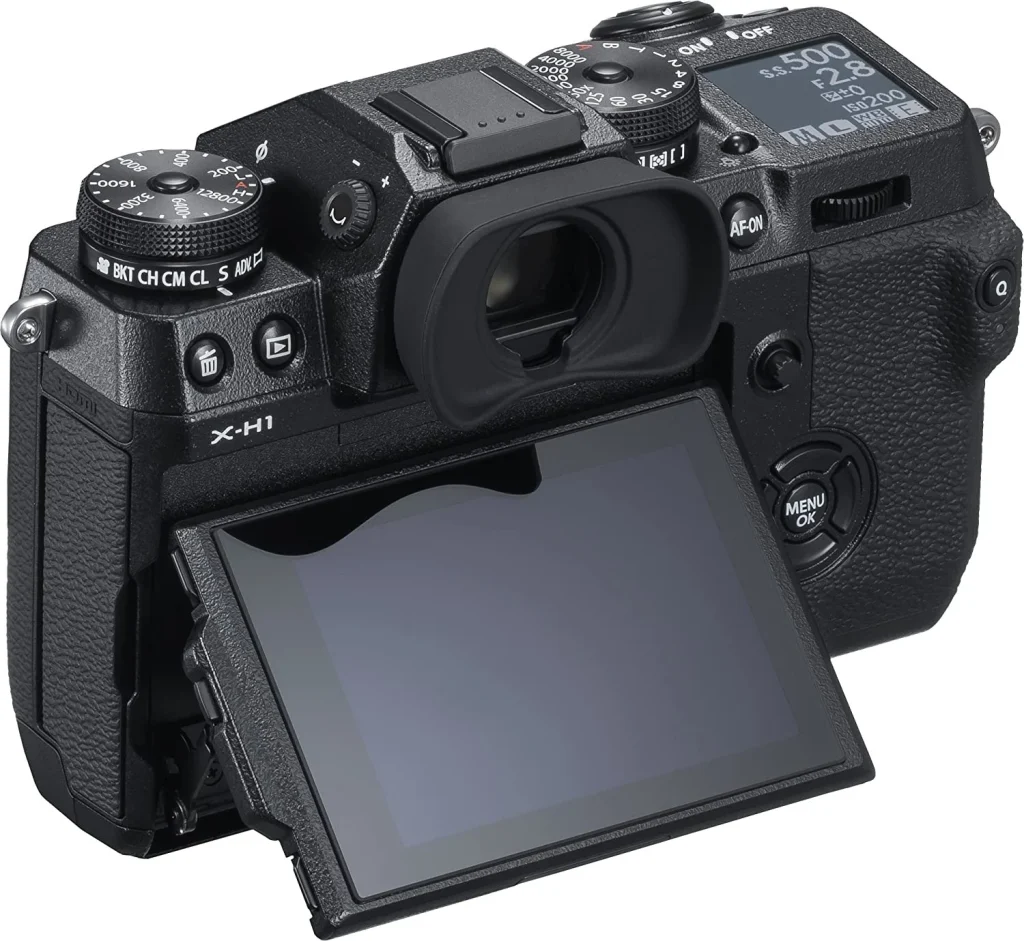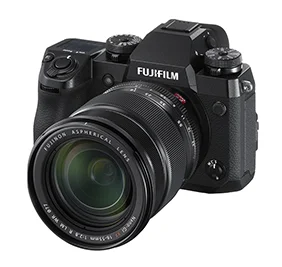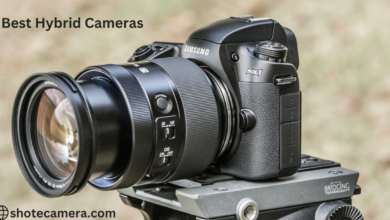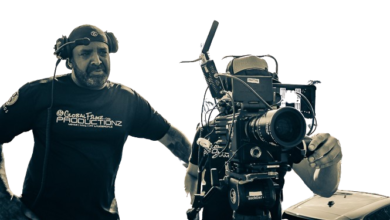The new flagship mirrorless single-lens “Fujifilm X-H1 “, which appeared on top of the “X-Pro2” and “X-T2,” were the flagships of the FUJIFILM X series.
He showed us Fujifilm’s high basic abilities, such as “film simulation” that digitally reproduces the film’s color and high sensitivity performance. Significantly, the image stabilization is super powerful.
However, the ” bigness that doesn’t look like a mirrorless interchangeable-lens camera ” is a considerable bottleneck. There is undoubtedly a sense of rigidity in the ruggedness, but let’s review it immediately.
The lens used was FUJINON XF16-55mm F2.8 R LM WR.
All the footage was taken in JPEG.
5.5 steps of image stabilization are powerful enough to reduce the number of tripods

What surprised me most when I touched the Fujifilm X-H1 was the 5.5-step image stabilization function.
This makes it is possible to shoot scenes that could not be shot by hand.
This not using a tripod I do. When hanging a pedestrian as in the example, ” slow shutter using a tripod ” is the standard shooting method.
However, if you use the 5.5-step image stabilization function.
you can take handheld shots even with a slow shutter speed of 1/8 second.
By the way, The image above is at 55mm zoom extended to the lens MAX.
You will be freed from the curse of a tripod, which will expand your range of expression.
If you’re shooting on the wide-angle side, you can carry it even at a slower 1/4 second.
By the way, I tried it for 1/2 second, but I felt I could shoot once every two times without shaking. If it’s so powerful, you’ll want to push the limits of how slow you can shoot.
Undoubtedly, the powerful image stabilization function will expand the situations in which you can shoot.
The strength of high sensitivity is noteworthy.
Speaking of the X series, it has a good reputation for image quality during high-sensitivity shooting. Even with the Fujifilm X-H1, the strength of high sensitivity was alive and well.
If you’re shooting on the wide-angle side, you can carry it even at a slower 1/4 second.
By the way, I tried it for 1/2 second, but I felt I could shoot once every two times without shaking. If it’s so powerful, you’ll want to push the limits of how slow you can shoot.
Undoubtedly, the powerful image stabilization function will expand the situations in which you can shoot.
Taken at ISO 12800. It’s not much different from ISO 6400. It’s a completely practical level. When combined with the powerful image stabilization function, you can take handheld shots even in extremely dark places. It’s like “Night? What’s that?”
The color is sober for Fujifilm X-H1

Compared to the previous flagship X-Pro2 and X-T2,
The color is sober even considering that it was taken in cloudy weather. Previous X-series, including the X-Pro2, X-Pro3, and X-T2, had deep colors and a transparent feeling like a positive film, but this model has a light color.

The dark part is a little crushed. For subjects with high contrast, shooting in RAW and developing it later is better. The dynamic range is not so wide.
The color is gentle, so it is suitable for subjects with a moist texture.
AF has a good bite without hesitation. Moving the AF point quickly with the lever on the back of the main unit is nice.
The film simulation is fun.
The film simulation ” Cinema / ETERNA ” first appeared on the Fujifilm X-H1. It is suitable for movies with a gentle color and rich tone reproduction in the dark part. The photo gives a slightly sober impression.
One unfortunate thing about film simulation is that it is a little tricky to change settings while looking through the viewfinder. So, rather than changing the settings for each subject, it may be better to shoot with only a specific film simulation for a day, such as “

Would you like to go with ASTIA today? ” Like a film camera. Maybe you can feel fresh as if you were shooting on film?
“Gotsusa” is mistaken for a digital single-eye
Speaking of mirrorless interchangeable-lens cameras, the body is thinner and lighter compared to digital SLR cameras because there is no mirror box.
However, the Fujifilm X-H1 is different. It is a model for professionals that is touted as a ” high durability and high rigidity ” body. If you want to increase the body’s durability, you don’t need to be compact, but it is a nice buddy with a weight of W139.8 x H97.3 x D85.5mm and about 673g.
If it’s just the weight, it’s the same as the Sony α9, but the body size is larger, so it feels nicer buddy. At first glance, it’s a size that you can’t help but wonder, ” Is this a mirrorless interchangeable-lens camera? “
Fujifilm Mirrorless Camera lens

The lens ” FUJINON XF16-55mm F2.8 R LM WR ” used this time weighs 655g, so the total weight is 1,328g. It’s much lighter than the flagship models of Canon and Nikon, but it’s a heavyweight that doesn’t seem like a mirrorless interchangeable lens camera.
If this happens, it may not be accepted by users who demand small size and lightness for mirrorless interchangeable-lens cameras. If you feel the size of the Fujifilm X-H1, you might even think that a digital SLR camera is fine.
Fujfilm Super Zoom lens
However, there are some areas where its size is an advantage. Due to its large size, the grip is quite deep, so you can hold it firmly. Therefore, you can keep it stable when shooting. Many mirrorless interchangeable-lens cameras have a shallow grip, giving priority to the thinness of the main body (some models do not have one), but I realized the merit of having a solid grip.
I like cameras with deep grip, so I don’t hate the design of the Fujifilm X-H1. I felt my little finger was a little extra, so I wanted to wear an optional battery grip if possible.
Well, I think using a digital SLR camera (second time) is okay.
Looking around other operations, there are many dials on the top of the main unit that set the shutter speed and ISO sensitivity. This design is similar to the X-Pro2 and X-T2. This kind of mechanical thing tickles the hearts of camera lovers.
If various settings can be made with the dial, it is advantageous that the current settings can be checked even when the camera is not turned on.
X-H1 Display LCD

A large sub-LCD is on the upper right side of the central unit. It uses the same E-ink as Fujifilm’s GFX 50S medium-format mirrorless digital camera. You can invert the color by turning on the backlight.
The shutter speed value and exposure ISO sensitivity.
film simulation, Fujifilm image quality mode, white balance, image size shooting mode, and the amount of information are displayed. It is a strength that you can understand the general settings of the camera just by looking here.
Shutter
The shutter button is a delicate touch ” feather-touch shutter button “. It’s light, this shutter. Moreover, it is quiet. However, if you are not used to it, the shutter will be released if you try to press it halfway. I think you will get used to it if you use it.
In addition, the EVF, with approximately 3.69 million dots and 100% field of view, has excellent visibility. It’s as clear as if you’re looking through the optical viewfinder, and you won’t notice much delay, even if you shake the camera from side to side. The EVF of the X series has been good for a long time, but the impression is that it is even better this time. Once you know the EVF of the X-H1, you may not be able to return to the mirrorless interchangeable lens camera of other companies.
I was a little worried about the rear LCD. It is a 3-inch touch panel TFT color LCD with approximately 1.04 million dots. It has a 3-way tilt method. Not only can it move up and down, but it can also move left and right.
Read the article Fujifilm X-30.
This mechanism is complicated to move intuitively. It’s like a joint technique, and I almost broke it because I was about to move it in a direction where I couldn’t bend it. Especially left and right. It seems that it has moved to the left and right due to video measures, but honestly, I don’t use this much. Above all, moving the rear LCD while smirking is mentally tricky.
It was taken from a pigeon’s eye using a tilt LCD. I feel grateful when aiming from a low position.
Another thing I was concerned about was the poor battery life. I took 235 shots and reduced the remaining 1 out of 5 memories. I don’t think it’s true that the battery will be depleted after half a day of shooting. You need a spare battery if you want to shoot for a day. I don’t want to imagine carrying around the X-H1, which has become a bricklayer due to the dead battery.
The FUJIFILM shadows.
The X-H1 is a simple and sturdy camera typical of Fujifilm. The powerful image stabilization function of 5.5 steps and high-sensitivity image quality with less noise greatly expand shooting opportunities regardless of the environment. The operability is comfortable because there are many physical buttons, and the range of your photos can be developed by using abundant film simulations.
However, it is also a fact that there is no distinctive feature. The most significant selling point of the X-series is ” the beauty of the image quality taken by JPEG “, but with the X-H1, there is a feeling that it is a little hidden.
Above all, for me, who has recently put a lot of effort into making lighter luggage, the fact that it is neither small nor light, even though it is a mirrorless interchangeable lens camera, is inevitable.
Sometimes I want the X-Pro2 regularly, but so far, I don’t wish to the Fujifilm X-H1. Do you feel like considering it when the price is good?
- Elevate Your Kitchen’s Aesthetic with Glass Splashbacks
- The Most Common Causes of Slip and Fall Accidents
- Navigating Success: How to Thrive as an OnlyFans Creator with Expert Management
- Cukong108 Games Slot: A Comprehensive Review of an Online Gaming Platform
- Msofas: Revolutionizing Comfort and Style with Corner Sofa Beds in the UK Market









